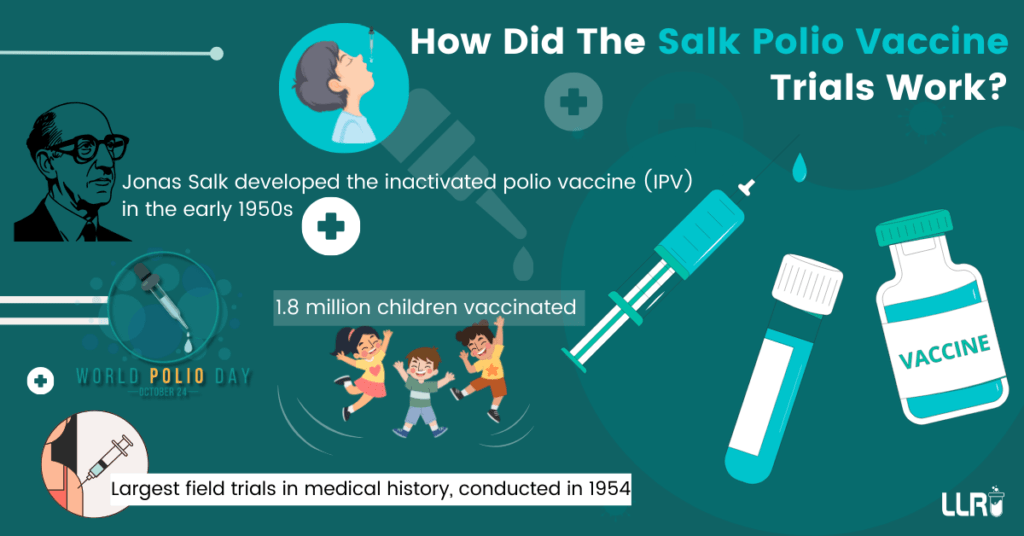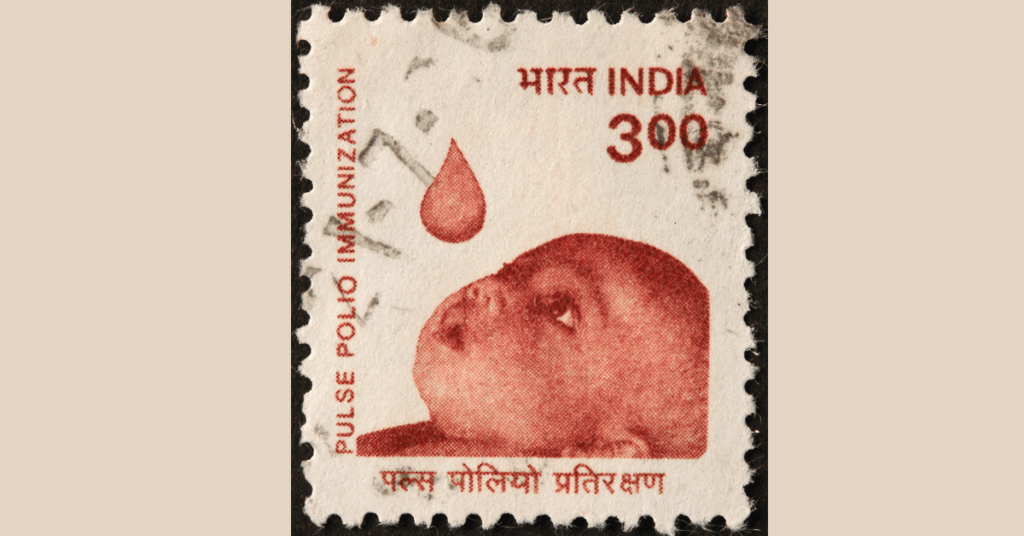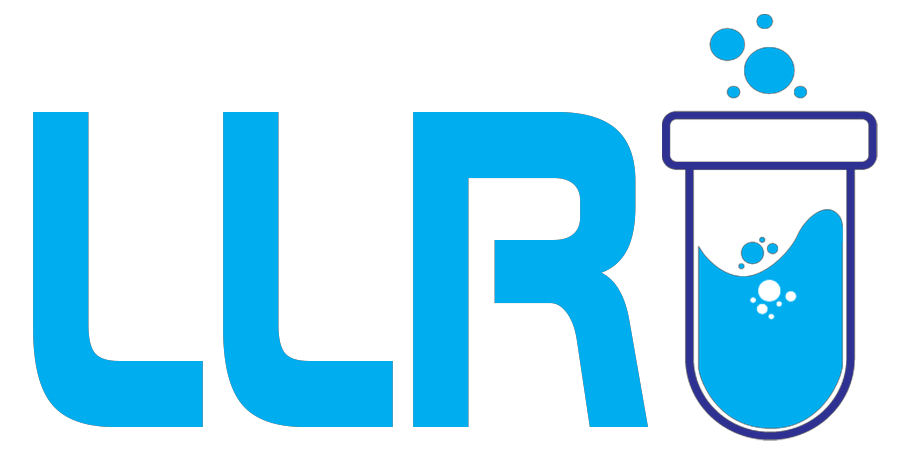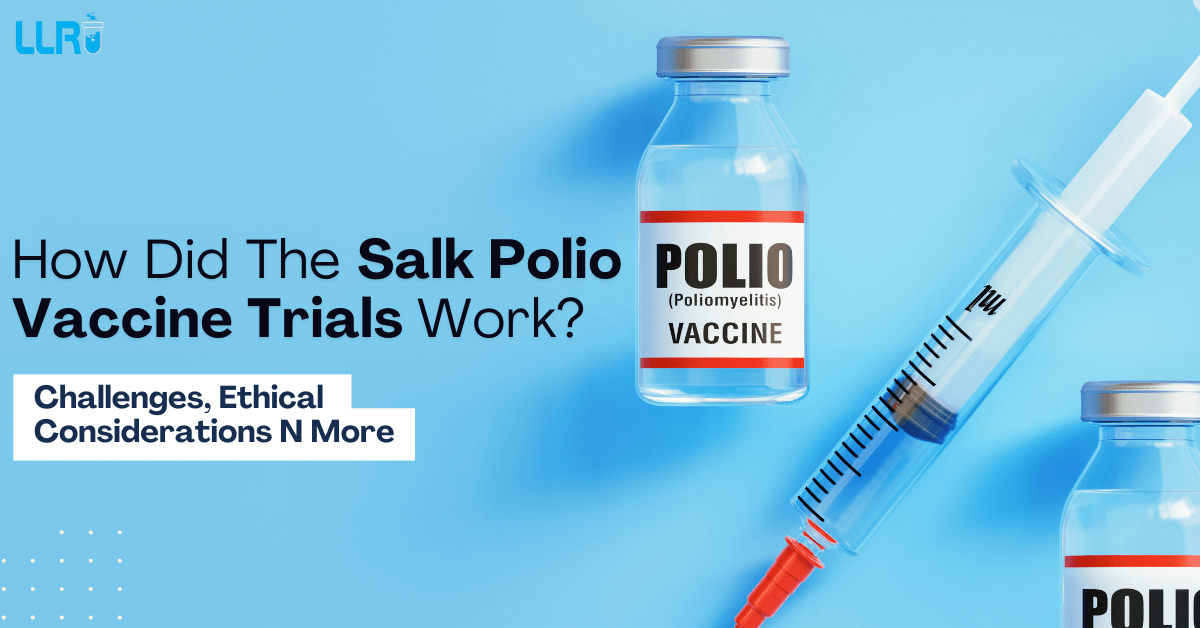How Did The Salk Polio Vaccine Trials Work? The Salk polio vaccine is considered a singleton because it was the first effective vaccine against polio, effectively eliminating the disease in many parts of the world. Its unique status as the only vaccine of its kind for a long time made it a standout in the field of immunization and established its legacy as a groundbreaking medical achievement.
Indeed, considered a pivotal moment in the mid-20th century that brought hope to millions, the Salk polio vaccine developed by Dr. Jonas Salk promised to eradicate the devastating poliomyelitis virus, which had inflicted fear and suffering across the globe. However, it is not without years of rigorous scientific trials, ethical debates, and formidable challenges.
The article contains the following:
- How Did The Salk Polio Vaccine Trials Work
- Impact Of The Salk Polio Vaccine
- Ethical Considerations In The Salk Polio Vaccine Trials
- What Were The Challenges Faced During The Salk Polio Vaccine Trials
Watch the engaging and informative video on The Vaccine That Changed the World | Salk Polio Vaccine on LLRI YouTube channel!
How Did The Salk Polio Vaccine Trials Work
Before the advent of the Salk vaccine, polio epidemics struck fear into communities, leaving thousands of children paralyzed or dead. The disease, caused by the poliovirus, primarily affected the nervous system, leading to muscle weakness and paralysis – often resulting in the victims needing to use iron lungs to breathe or facing life-long disabilities -yes, that happened!
Aaaaand – the introduction of the Salk vaccine in the 1950s marked a turning point in the fight against polio. The impact of the Salk polio vaccine was so colossal that, in 1954 a nationwide field trial involving over 1.8 million children became the largest public health experiment in history.
How did the Salk polio vaccine trials work? Well, that was a feat in itself, if you were to ask us. Why? The vaccine itself was an inactivated (killed) poliovirus injected into the bloodstream. This prompted the body’s immune system to recognize and neutralize the virus without causing the disease. Hence it was more than important to deduce the safety and efficacy of the Salk polio vaccines.

Impact Of The Salk Polio Vaccine
The Salk polio vaccine was a game-changer for the health sector, because, the impact of the Salk vaccine was profound and immediate. Polio cases plummeted dramatically in countries where vaccination programs were implemented. By the 1970s, thanks to widespread immunization efforts, polio was virtually eliminated in the United States, with the numbers dropping by 90% in the country, and many other developed nations.
The success and impact of the Salk polio vaccine laid the foundation for further advancements in vaccination and public health policy, inspiring confidence in the ability to combat other infectious diseases through immunization.
Here are some key takeaways from the article How Did The Salk Polio Vaccine Trials Work? What Were The Challenges Faced During The Salk Polio Vaccine Trials?
- Jonas Salk developed the inactivated polio vaccine (IPV) in the early 1950s.
- The vaccine used inactivated (killed) poliovirus to stimulate an immune response without causing disease.
- Initial tests were conducted on laboratory animals and a small group of adults.
- Early tests showed the vaccine produced immunity to poliovirus.
- Largest field trials in medical history, conducted in 1954.
- Organized by the National Foundation for Infantile Paralysis.
- Involved 1.8 million children in the United States, Canada, and Finland.
- Participants included children in first, second, and third grades (ages 6-9).
- Double-blind, placebo-controlled study.
- Vaccine was administered in three doses over several weeks.
- Children were monitored for poliovirus infection and adverse reactions.
- Vaccine was found to be 80-90% effective in preventing paralytic polio.
- Led to widespread vaccination campaigns.
- Drastic reduction in polio cases in the United States and worldwide.
- Paved the way for further development and distribution of polio vaccines.

Ethical Considerations In The Salk Polio Vaccine Trials
Like the many clinical trials, the Salk polio vaccine trials were not without ethical dilemmas. Conducting experiments involving large-scale human trials raised significant ethical considerations, especially given the potential risks to participants – due to the inactivated (killed) poliovirus injected into the bloodstream of the recipients.
The ethical principles of informed consent, beneficence (acting in the best interest of participants), and non-maleficence (minimizing harm) were huge, and during the trials, careful steps were taken to ensure informed consent from participants or their guardians.
- Detailed information about the vaccine and its potential risks was provided, allowing individuals to make voluntary decisions about participation.
- The trials adhered to rigorous scientific protocols to reduce the risks of the vaccine and ensure the reliability of results.
A few of the primary ethical considerations in the Salk polio vaccine trials were creating the balance between the urgency to develop a vaccine and the imperative to conduct thorough testing. Critics argued that rushing the vaccine could compromise safety, while proponents emphasized the urgent need to save lives threatened by polio epidemics.
However, the ultimate success of the trials underscored the importance of ethical guidelines in medical research, setting a precedent for future vaccine development trials.
What Were The Challenges Faced During The Salk Polio Vaccine Trials?
As huge as its success, the Salk polio vaccine had its own challenges too. From the scientific point of view, the experts had to jump hurdles in culturing and inactivating the poliovirus while retaining its immunogenic properties. This required meticulous laboratory work and collaboration among virologists, immunologists, and clinicians.
From the logistical point of view, organizing and executing the massive field trials of the Salk vaccine was met with a deluge of roadblocks – coordinating efforts across multiple research centers, ensuring consistent vaccine administration, and collecting and analyzing vast amounts of data demanded extensive planning and execution. In addition to these, what were the challenges faced during the Salk polio vaccine trials?
- Many people were afraid that the vaccine might have side effects or that it wasn’t tested enough. Addressing these concerns required transparent communication, ongoing public education campaigns, and the endorsement of trusted medical authorities – which were not easy tasks.
- The financial and political support needed for the Salk polio vaccine trials was huge. Getting money, following regulatory processes, and gaining public and government backing were all key to making the trials successful.
- Another challenge was the size of the trials. Conducting large trials in many different places to collect enough data on safety and effectiveness needed a lot of coordination and resources.

On A Final Note…
Despite many challenges, the Salk polio vaccine trials were a success thanks to the hard work and cooperation of scientists, healthcare workers, and the communities involved. The careful testing and high ethical standards used in these trials set a model for future vaccine development and clinical research, helping to shape modern vaccination practices.
The Salk polio vaccine trials were a major achievement in medical science history. The Salk vaccine trials showed how important careful scientific study and ethical practices are in fighting global health threats.
FAQs
What is the difference between Salk and Sabin polio vaccine?
The difference between the Salk and Sabin polio vaccines lies in their composition: the Salk vaccine uses a killed virus, while the Sabin vaccine uses a live but weakened virus. However, in the developing world, outbreaks of poliovirus still occur, ironically as a consequence of the polio vaccine itself.
How does the polio vaccine work?
The oral polio vaccine (OPV) generates antibodies in the blood (serum immunity) against all three types of poliovirus. This protection helps prevent polio paralysis by stopping the virus from reaching the nervous system.
What are the three types of polio?
There are three types of poliovirus (WPV): type 1, type 2, and type 3. To prevent polio disease, it’s essential to protect against all three types.

